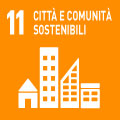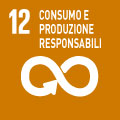- Docente: Anna Montini
- Crediti formativi: 12
- SSD: SECS-P/01
- Lingua di insegnamento: Inglese
- Moduli: Anna Montini (Modulo 1) Anastasios Xepapadeas (Modulo 2)
- Modalità didattica: Convenzionale - Lezioni in presenza (Modulo 1) Convenzionale - Lezioni in presenza (Modulo 2)
- Campus: Rimini
- Corso: Laurea Magistrale in Resource economics and sustainable development / economia delle risorse e dello sviluppo sostenibile (cod. 8839)
Conoscenze e abilità da conseguire
The purpose of this course is to enable students to rigorously apply appropriate resource evaluation and decision-making methodologies. In particular, as regards evaluation methods where decisions have marginal impacts in a non-competitive market, theories and applications will be shown in case of tradable and non-tradable resources: in the sub-case of tradable resources, the concept of shadow exchange rate will be introduced; while in the sub-case of non-tradable resources, the concepts of willingness to pay and opportunity costs will be discussed. Evaluation methods where decisions have non-marginal impacts will also be presented. As regards evaluation methods where there is no market, both production approaches (e.g., response method, replacement cost, opportunity cost, preventive cost) and utility approaches (e.g., revealed preferences and stated preferences) will be discussed. Students will also be taught recent theories and applications of evaluation methods as dependent on available information such as (fuzzy or crisp) Cost Effectiveness Analysis, (fuzzy or crisp) Multi-Criteria Analysis, (fuzzy or crisp) Threshold Analysis, (fuzzy or crisp) Cost-Benefit Analysis. Next, as for decision-making methods, as dependent on the appropriate evaluation methods, the choice of a strategy or some strategies will be tackled, by optimising or non-optimising, ranking or combining them, within constrained or non-constrained problems. Students will also be taught recent theories and applications of decision-making methods under uncertainty or risk, time spans, space interactions, indirect effects, and distributive effects.
Contenuti
The course is organized in two modules (Prof. Anna Montini and Prof. Anastasios Xepapadeas).
- Fundamentals of Cost-Benefit Analysis: Project Appraisal, Valuing Benefits and Costs, Discounting Future Benefits and Costs, Choice of Discount Rate.
- Valuation when primary markets are missing from observed behaviour and through Surveys: Total economic value; Valuation Methods: Revealed and stated preferences under existing, surrogate and hypothetical markets; Random Utility Model, Travel cost, Hedonic Pricing, The value of statistical life, Contingent valuation, Choice Experiments; Benefit Transfer.
- Resource valuation case studies.
- Advanced topics in Cost-Benefit Analysis: The choice of the social discount rate – Ramsey rule and declining discount rates, Distributional weights, Risk analysis – sensitivity, Monte Carlo, qualitative - in CBA
- Cost-benefit analysis for the environment and total economic value; Ecosystem valuation: Valuation of ecosystems services, Ecosystems services and human well-being, Biodiversity valuation; Conservation vs development; Irreversibility and decision making in the face of risk, option price and option value; The TEEB (The Economics of Ecosystems & Biodiversity) approach.
- Sustainability: Strong and weak sustainability; Comprehensive wealth and genuine savings; Introduction to green accounting and the adjusted domestic product;
- Introduction to environmental policy: Environmental policy instruments, taxes tradable emission permits, voluntary agreements.
Testi/Bibliografia
D. Pearce, G. Atkinson and S. Mourato, 2006, Cost-Benefit Analysis and the Environment: Recent Developments, OECD.
G. Atkinson and S. Mourato, 2015, Cost-Benefit Analysis and the Environment: Recent Developments, OECD WP 97
The World Bank, 2006, Where is the Wealth of Nations? Measuring Capital in the 21st Century, Washington DC.
D. Phaneuf and T. Requate, 2017, A Course in Environmental Economics: Theory, Policy and Practice, 2017, Cambridge University Press.
European Commission, 2014, Guide to Cost-benefit Analysis of Investment Projects 2014-2020, DG for Regional and Urban Planning.
R. Perman, Yue Ma, J. McGilvray, and M. Common, 2012, Natural Resource and Environmental Economics, 4th edition, Pearson Education.
A.E. Boardman, D.H. Greenberg, A.R. Vining, D.L. Weimer, Cost-Benefit Analysis - Concepts and Practice, Prentice Hall, 2010.
HM Treasury (2003), The Green Book – Appraisal and Evaluation in Central Government, HM Treasury, London.
Intergenerational wealth transfers and social discounting: Supplementary Green Book guidance (july 2008).
Further readings will be recommended by the two lecturers.
Metodi didattici
Lectures
Modalità di verifica e valutazione dell'apprendimento
There will be a final written exam consisting of two questions for each module; all of them must be answered. The final exam comprises 100% of the final grade.
Strumenti a supporto della didattica
Slides and some suggested readings are available on AMS Campus for those are included in the taching staff-students distribution list.
Link ad altre eventuali informazioni
Orario di ricevimento
Consulta il sito web di Anna Montini
Consulta il sito web di Anastasios Xepapadeas
SDGs


L'insegnamento contribuisce al perseguimento degli Obiettivi di Sviluppo Sostenibile dell'Agenda 2030 dell'ONU.
